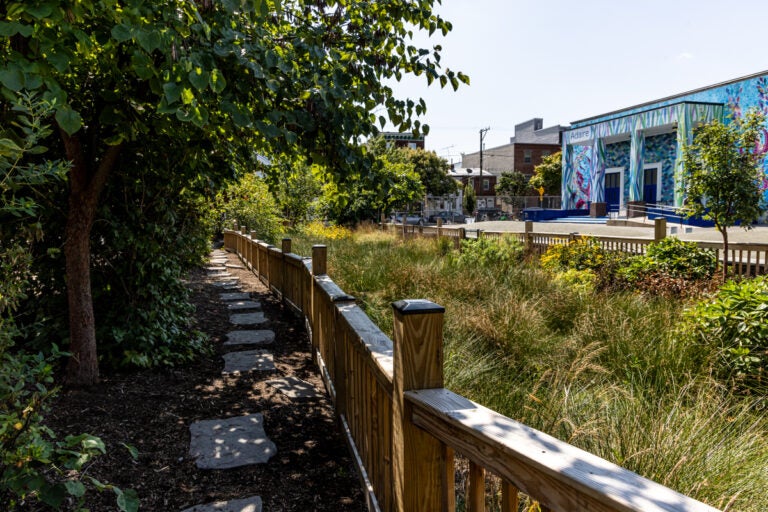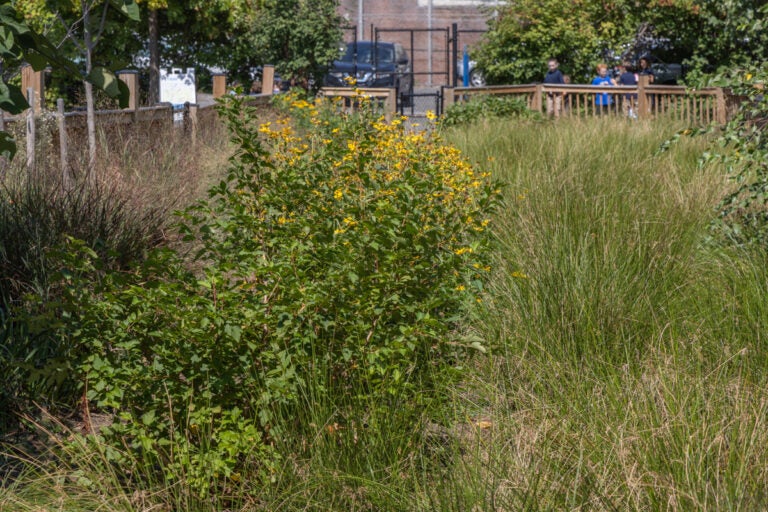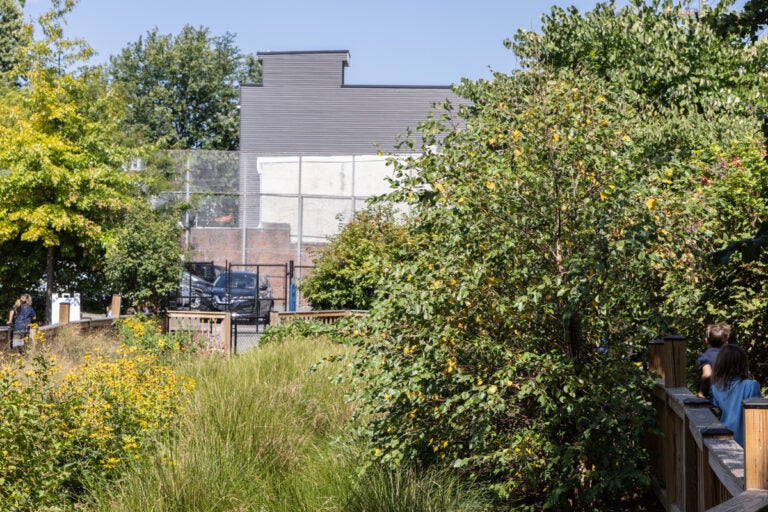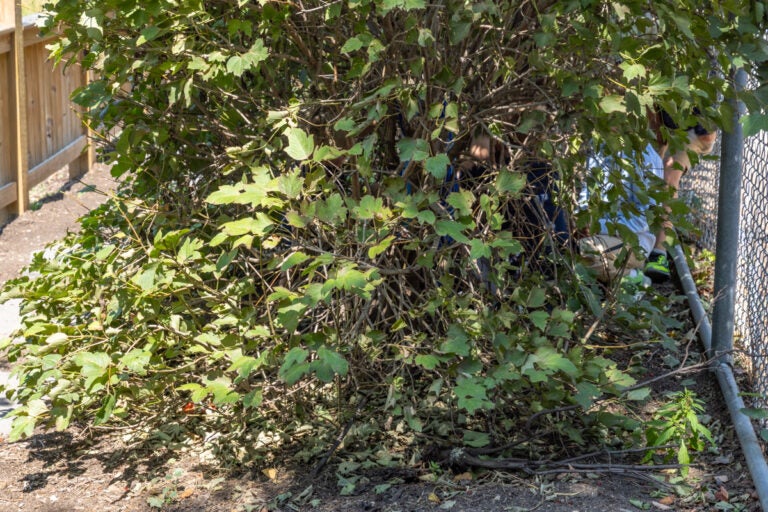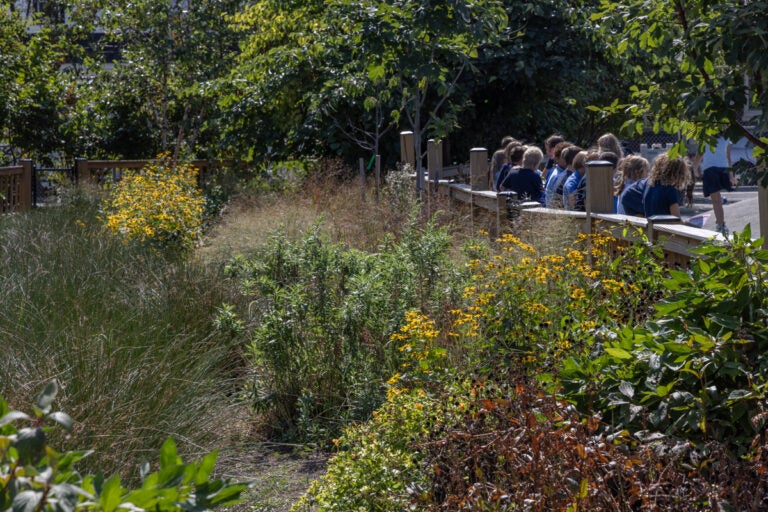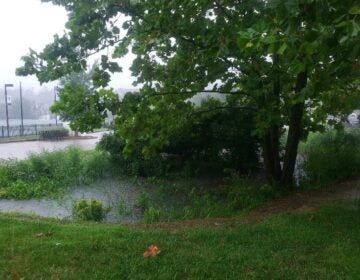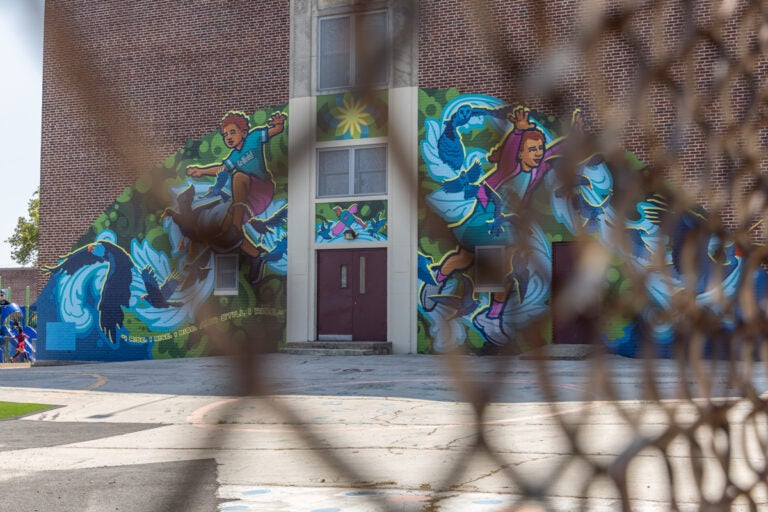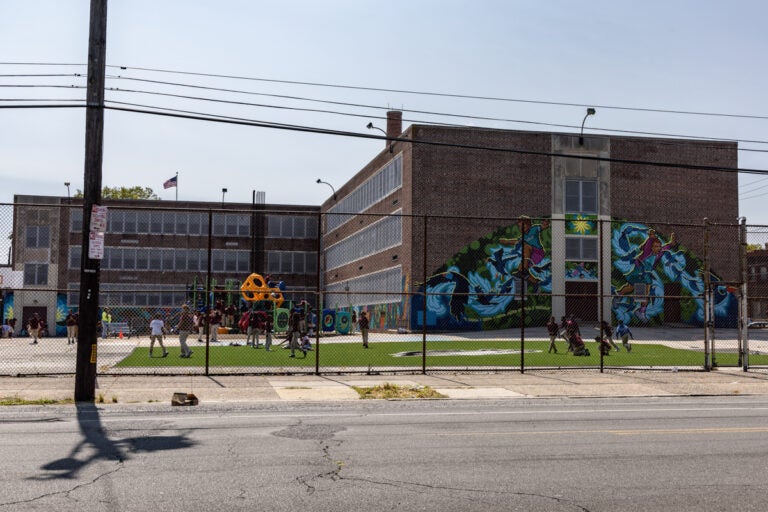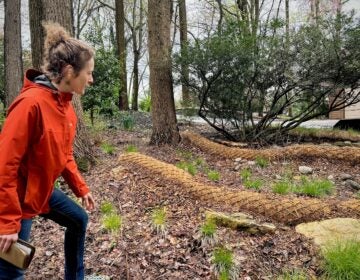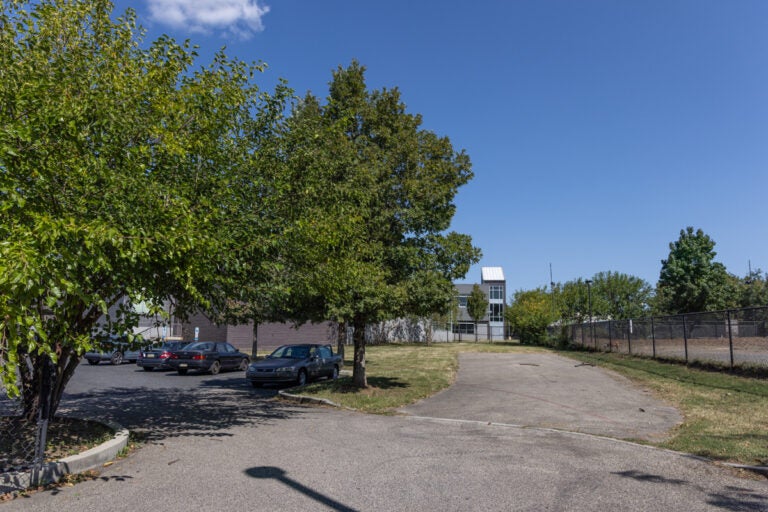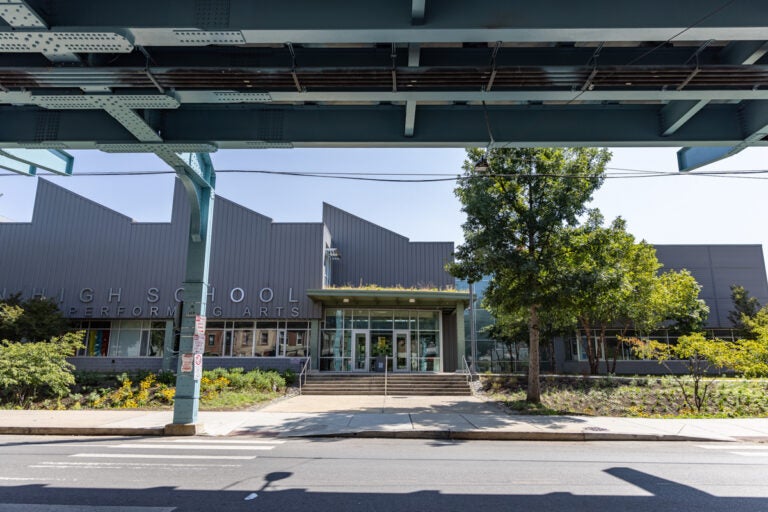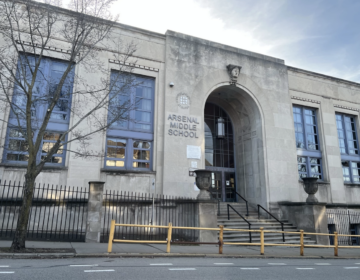Schoolyards in Philly will get rain gardens thanks to a federal grant
The Nature Conservancy wants to prevent stormwater runoff from schoolyards by building rain gardens that also provide relief from the heat.
Listen 1:34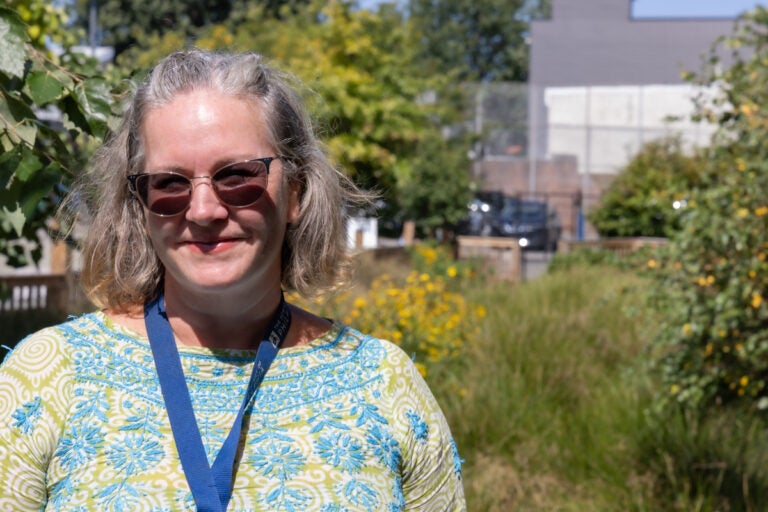
Emma-Lynn Melvin, green infrastructure program manager at the School District of Philadelphia, outside the rain garden at Adaire Elementary School in Philadelphia. (Kimberly Paynter/WHYY)
From Philly and the Pa. suburbs to South Jersey and Delaware, what would you like WHYY News to cover? Let us know!
During a recent recess at Alexander Adaire Elementary School in the Fishtown section of Philadelphia, some children took a break from the asphalt playground and ran down a cool and breezy trail shaded by red bud, honey locust and oak trees.
The small pathway led the young students along a colorful rain garden of native plants, home to insects and birds. The rain garden not only gives students a chance to learn about nature, but it also soaks up stormwater runoff from the playground, parking lot and the nearby street.
Adaire is just one Philadelphia school that has converted asphalt into green spaces that also soak up rain and prevent water pollution. It’s part of a Philadelphia Water Department initiative that began more than 10 years ago. About a third of the city’s elementary schools have rain gardens, pollinator habitat and tree canopy, and the district hopes to transform more schoolyards citywide.
The district is one step closer to its goal, thanks to help from the Nature Conservancy, which will use a $1 million U.S. Fish and Wildlife Service grant to build green stormwater infrastructure at four elementary schools in South Philadelphia and the city’s Kingsessing neighborhood.
“We see the benefits that green infrastructure provides to our students, and those accelerated benefits outside stormwater management — the greening, the calming, the improvement of air quality and creating space within our school yards and our campuses,” said Emma Melvin, the Philadelphia School District’s green infrastructure program manager.
In older cities such as Philadelphia, sewage and stormwater flows through the same underground pipes. During heavy rainfall, they can overflow — sending raw sewage and pollution from parking lots, streets and even playgrounds into waterways.
Cities across the U.S. are turning to rain gardens to manage intense storms, particularly as state and federal regulations require them to reduce 85% of stormwater and sewage overflow.
As much as 15 billion gallons of raw sewage and polluted stormwater make their way into Philadelphia’s waterways every year, according to a 2023 new report by PennEnvironment. Bartram’s Garden, a botanical garden situated along the Schuylkill River in Southwest Philadelphia, cancels about a quarter of its aquatic programs because of bacterial levels caused by sewage overflows.
In 2011, Philadelphia launched a 25-year plan known as Green City, Clean Waters to reduce the amount of sewage entering the city’s waterways by using green infrastructure and expanding stormwater treatment capacity.
The Philadelphia Water Department said since the initiative began, it has reduced overflows by 3 billion gallons by utilizing technology composed of natural elements, including rain gardens, to soak up stormwater.
A majority of the Nature Conservancy’s new grant will fund the installation of rain gardens and green space at Stephen Girard School in South Philadelphia. The project also involves building underground structures that temporarily capture, filter and store water in the ground.
Projects at Comegys, S. Weir Mitchell and Harrington elementary schools — located near the Schuylkill — also are receiving funding.
Lyndon DeSalvo, urban conservation program manager with the Nature Conservancy, said schoolyards, with their concrete and asphalt surfaces, contribute to stormwater runoff because rainfall can’t soak into the ground.
“There’s not a lot of water infiltrating into the ground, and so it just runs directly off into the sewer system,” he said. “All of these schools are located within the combined sewer area in Philadelphia. So during storm events, that can mean these are overflowing directly into our waterways. So, it creates issues around water quality and impacts fish and wildlife, and people that use those urban watersheds.”
The benefits of installing green spaces at schools are twofold — increased tree canopy also can provide shade in an increasingly warming city, and help mitigate the heat island effect. At the beginning of the school year, more than 60 Philadelphia public schools closed early because of extreme heat.
Parts of Philadelphia are prone to hotter temperatures because of dark pavement and roofs.
“In terms of climate resiliency, the added tree canopy is reducing urban heat islands in some of the most affected neighborhoods in the city,” DeSalvo said. “All of these sites have limited tree canopy and are extremely hot. We’re seeing the effects of climate change.”
Construction will begin in 2026 at Stephen Girard and in 2025 at the three Kingsessing schools.

Get daily updates from WHYY News!
WHYY is your source for fact-based, in-depth journalism and information. As a nonprofit organization, we rely on financial support from readers like you. Please give today.



